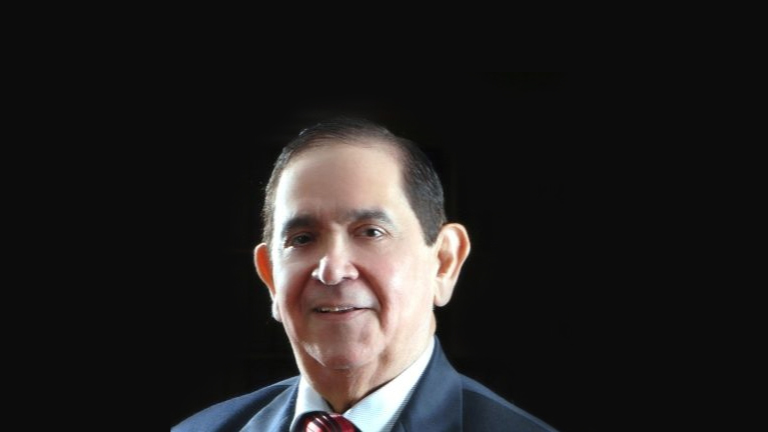[:en]
“The most important positive indicators in the report relate to the young population and include a decline in dropout rates and teen pregnancy and an increase in college enrollment. We definitely see that at UNO. Every year we hit a record in the Latino/Hispanic population. These things show promise in the sense that this young generation is doing whatever it can to contribute to society,” said Dr. Lissette Aliaga-Linares, Assistant Professor of Sociology at UNO and Senior Research Associate at CPAR (the Center for Public Affairs and Research).
Aliagna-Linares was referring to a recent study published by UNO, the first of its kind to look at the impact of the 2008 economic crisis on Nebraska’s Latino population.
The study is titled, “Latinos and the Economic Downturn in Nebraska.” Aliagna-Linares explained they benefitted from the fact the U.S. Census Bureau offered data that covered the pre-crisis period, the economic crisis period and the so-called recovery period.
At OLLAS, researchers routinely check data on the Latino population, looking at the demographic evolution of socioeconomic indicators. But the new study goes a step further.
“It’s interesting data because it gave us a good sample size to disentangle the trends in terms of adult and youth population,” she said.
Aliagna-Linares explained they wanted to mine as much data as possible to go deeper to understand why the Latino community’s poverty rate was double the Nebraska rate, even after the 2010-2013 recovery period.
“You have to remember the demographics look different now than they did in 2000. From 1990-2000, the proportion of growth was explained by migration but that’s no longer the case. Latino communities today are growing by natural increase, more people are having children,” she said.
It’s not that women are having more children overall. The key factor in the Latino growth is intrinsic, there’s a younger age structure and more women are of reproductive age.
“It makes for a different type of population. Even though Latinos make up two thirds of the foreign population in Nebraska, that doesn’t mean the entire population is composed of immigrants. Two thirds of the Latino youth population are U.S. and Nebraska-born,” said Aliagna-Linares.
Only 37% of the Latino community is foreign. She said most of the Latino youth you see are U.S.-born and that makes for an interesting demographic. A lot of Latino households have families composed of adults that are foreign born and young children or youth that are U.S.-born and raised in Nebraska.
“That means one thing we need to think about is how much the policies and consequences of the policies will impact this future generation. That’s one part we found important to highlight in the report. Migration and immigration will continue to be important for the Latino community but if you want to think of the future … then how do we integrate minority youth into the state and give them more opportunities here?” she said.
When it comes to unemployment, the Latino community hasn’t quite recovered from the downturn. Aliagna-Linares explained the data indicates unemployment rates have been steadily increasing for Latinos, particularly those born in the U.S.
“The Latino population had an unemployment rate of 7% pre-crisis. When the recession hit, it only increased to 8% but it did continue to grow in the post-recession period to 10%. It’s a worrisome trend facing the Latino community,” she said.
The Latino workforce is still largely focused on manufacturing and construction. And Aliagna-Linares said researchers need to look deeper in what is happening in those industries and see how these jobs provide or could provide workers with opportunities. Though these industries are good for secure employment, they don’t necessarily offer workers the opportunity for advancement.
Another trend is a rising number of single head of households which contributes to the vulnerability of Latinos.
“We don’t know how much is due to deportation. But another phenomenon I have observed is a separation in the households. It’s called “reudas blancas” or “white wheels,” which means a couple is married and have a family together but in order to make ends meet, the wife stays in Nebraska and the husband goes to another state for work,” she said.
And even though Latinos aren’t the biggest force in electoral power at just 5% of the voting population right now, there is a “voter’s reserve” growing up in the state thanks to the younger, U.S. born Latino population.
Aliagna-Linares explained, “Eventually, 14% of the population will be Latino, so even though campaigns may be thinking to attract adult voters, they may want to think about the next generation and treat those adult voters well since their kids will be watching.”
She reiterated that in order to build civic culture for the future, politicians need to speak to this younger generation that will eventually become an important segment of the Nebraska electorate.
“The national and state trend is that the minority population will keep growing, so it’s important to see how we integrate these people into the community and provide them social mobility,” she said.
View the full report at unomaha.edu/college-of-arts-and-sciences/ollas.
[:]




